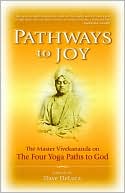Category Books
- Fiction Books & Literature
- Graphic Novels
- Horror
- Mystery & Crime
- Poetry
- Romance Books
- Science Fiction & Fantasy
- Thrillers
- Westerns
- Ages 0-2
- Ages 3-5
- Ages 6-8
- Ages 9-12
- Teens
- Children's Books
- African Americans
- Antiques & Collectibles
- Art, Architecture & Photography
- Bibles & Bible Studies
- Biography
- Business Books
- Christianity
- Computer Books & Technology Books
- Cookbooks, Food & Wine
- Crafts & Hobbies Books
- Education & Teaching
- Engineering
- Entertainment
- Foreign Languages
- Game Books
- Gay & Lesbian
- Health Books, Diet & Fitness Books
- History
- Home & Garden
- Humor Books
- Judaism & Judaica
- Law
- Medical Books
- New Age & Spirituality
- Nonfiction
- Parenting & Family
- Pets
- Philosophy
- Political Books & Current Events Books
- Psychology & Psychotherapy
- Reference
- Religion Books
- Science & Nature
- Self Improvement
- Sex & Relationships
- Social Sciences
- Sports & Adventure
- Study Guides & Test Prep
- Travel
- True Crime
- Weddings
- Women's Studies
Pathways to Joy: Master Vivekananda on the Yoga Paths to God »

Authors: Swami Vivekananda
ISBN-13: 9781930722675, ISBN-10: 1930722672
Format: Paperback
Publisher: New World Library
Date Published: April 2006
Edition: (Non-applicable)
Author Biography: Swami Vivekananda
Book Synopsis
At the 1893 Parliament of Religions in Chicago, Swami Vivekananda transformed Western thinking. He showed that, far from being an exotic novelty, Hinduism was an important, legitimate spiritual tradition with valuable lessons for the West. Pathways to Joy is a selection of 108 of his sacred teachings on Vedanta philosophy. In accessible and powerful prose, Vivekananda illuminates the four classical yoga paths — karma, bhakti, raja, and jnana — for the different natures of humankind. The messages focus on the oneness of existence; the divinity of the soul; the truth in all religions; and unifying with the Divine within. Invaluable and inspiring, the selections also explore karma, maya, rebirth, and other great revelations of Hinduism.
Publishers Weekly
The Indian guru Swami Vivekananda had the gift of being bicultural. He brought the Vedanta philosophy of Hinduism to the 1893 World Parliament of Religions and prepared the way for the flowering of yoga in the West. Vivekananda's accessible teachings have been edited and compiled in countless ways, and this edition by DeLuca, a student of Vedanta, is intended to offer students of yoga something to think about, since Indian yoga is more than a series of physical postures. The guru gently introduces what may be unfamiliar ideas from Hinduism, such as maya, or illusion. The book's organization into broad themes, including the four yoga paths, is logical in concept yet fuzzy in execution, because the writing doesn't always lend itself to clear differentiation. "Oneness" is a pervasive teaching for Vivekananda, and ruminations on it end up scattered throughout the book. The result is somewhat repetitive and disorganized. Nor are there citations showing where the writing is drawn from, except in the appendix. End material, including a reading list, glossary and biographical material, is helpful. This is not the best introduction to Vivekananda, but the swami is so clear himself that he needs little help. (June) Copyright 2006 Reed Business Information.
Table of Contents
Subjects
 Hinduism
Hinduism  Hindu Philosophy
Hindu PhilosophyChristianity
 Hinduism
Hinduism  Spirituality & Spiritual Leaders - Hinduism
Spirituality & Spiritual Leaders - HinduismChristianity
 All Religion
All Religion  Hinduism
HinduismNonfiction
 Philosophy
Philosophy  Asian Philosophy
Asian PhilosophyNonfiction
 All Nonfiction
All Nonfiction  Asian Philosophy
Asian PhilosophyPhilosophy
 Asian Philosophy
Asian Philosophy  Hindu Philosophy
Hindu PhilosophyPhilosophy
 Asian Philosophy
Asian Philosophy  Indic & South Asian Philosophy
Indic & South Asian PhilosophyReligion Books
 Hinduism
Hinduism  Hindu Philosophy
Hindu PhilosophyReligion Books
 Hinduism
Hinduism  Spirituality & Spiritual Leaders - Hinduism
Spirituality & Spiritual Leaders - HinduismReligion Books
 All Religion
All Religion  Hinduism
HinduismChristianity
 Christianity
Christianity  Hinduism
HinduismChristianity
 Christianity
Christianity  All Religion
All ReligionNonfiction
 Religion
Religion  Hinduism
HinduismNonfiction
 Religion
Religion  All Religion
All ReligionReligion Books
 Christianity
Christianity  Hinduism
HinduismReligion Books
 Christianity
Christianity  All Religion
All Religion
